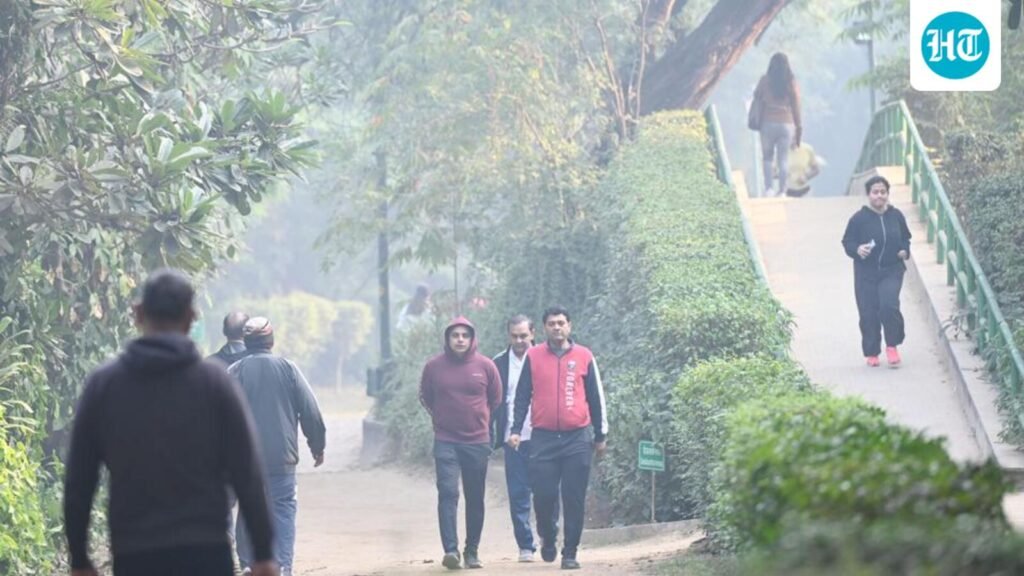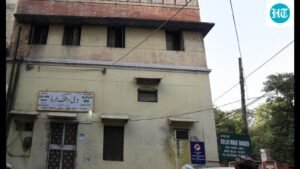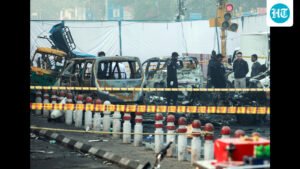
There was a time when Delhi’s winter sun signaled a change in the rhythm of the city. The elderly would be the first to don their woolen and their caps as they went about their morning walks — their group of friends growing in direct correlation with the sun’s trajectory in the sky. Some would be seated on park benches, others in their courtyards or even by the wayside, lost in animated discussions over steaming cups of tea. It was a ritual of community — of warmth, movement, and laughter.

Over the past few years, that familiar scene has practically vanished in the smog. For the elderly, the shared commons — the parks, the pavements, the markets — are now places to avoid. Once free and open spaces now feel unsafe, even hostile. Pollution has “privatised” Delhi’s winter, confining the elderly to their rooms, robbing them of the small, everyday freedoms.
A Lancet Planetary Health study estimates that PM 2.5 pollution was responsible for more than 17 lakh deaths in India in 2022 — up by 38% since 2010. And, for those aged 60 and above, every short-term spike in PM2.5 raises the risk of daily mortality by about 1.5%. The wheezing and raucous coughs, the nebulisers and inhalers, the spiraling medication costs, and for some, emergency hospitalizations, have become a recurring nightmare for many families in the city.
The crisis runs deeper than mortality statistics. Each year, the smog silently strains the city’s already stretched public health system. Older adults, many of whom are struggling to manage hypertension, chronic obstructive pulmonary disease (COPD), or diabetes, are the first to turn up in outpatient clinics and emergency rooms when pollution spikes. Hospital admissions for respiratory illness in Delhi surge by over 20% during severe smog episodes, according to studies by AIIMS and ICMR. The Council on Energy, Environment and Water (CEEW) has estimated that air pollution-related health costs drain 3% of India’s GDP annually. The price of inaction is paid first in hospital bills and lost productivity, and then, tragically, in lives that could have been saved.
The Graded Response Action Plan (GRAP), Delhi’s main defense against air pollution, sets out actions that need to be taken by various actors responsible for these noxious fumes. But little seems to change on the ground. If we don’t even acknowledge the seriousness of the crisis, actively warn or protect vulnerable groups like older adults, then we are failing them as a society. Why can’t we run targeted awareness campaigns through the communication channels that the elderly use — WhatsApp groups, RWA bulletins, or neighborhood clinics? Why don’t we learn from other countries that issue age-specific health alerts, limit outdoor activities, and activate local health support systems when pollution spikes? Clean air is a collective responsibility that can’t be outsourced to expensive personal air purifiers and private hospitals.
When the elderly lose access to the commons — to the parks, pavements and markets that anchor their daily lives — it is not just their lungs that suffer; it is our social contract that begins to fray. The right to breathe clean air, to move, to take part in public life, are unstated promises every city makes to its citizens. Delhi breaks these promises, year after year, government after government.
The city’s air crisis, like many of its other problems, has persisted because of fragmented accountability — divided between municipal, state, and central agencies — and limited political appetite for long-term, unpopular reform. Yet, this is precisely where leadership comes in.
The ruling party, both at the Center and in Delhi, must use its sizable political capital to take the tough calls needed to restrict vehicular emissions, create an effective public transport system, accelerate clean fuel transitions, and enforce construction controls, among other measures. These are public health imperatives that have growing bipartisan support, and political leaders across party lines must work together to address the crisis. Else, as any politician knows, political capital can also depreciate when governments let preventable crises metastasize into permanent and extremely serious public costs.
Finally, this seasonal crisis also presents an opportunity. If Delhi can show that it is possible to reverse this problem by combining strong political resolve and efficient solutions, it could become a model for cities across India — be it Ghaziabad or Bhiwadi, and across the world. A cleaner, healthier national capital would signal that India is serious about resolving complex urban challenges that acutely affect the elderly. Delhi’s citizens are watching. With bated breath.
Barkha Deva is an independent policy consultant. The views expressed are personal





